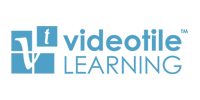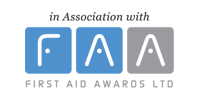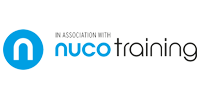Our guide talks you through the role of a principal designer and what it entails and what you can expect from our service. With the introduction of the Construction (Design and Management) Regulations in 2015, the role of principal designer was introduced and is one that you need to have in all construction projects where more than one contractor is appointed. We want to make sure you understand why the role has been introduced and what as principal designer we will be doing on your construction projects.
Although this might seem like a simple question, it is not always obvious who has the capability to be the principal designer. On larger projects the principal designer will usually be an organisation that undertakes principal designer duties. For smaller projects it could be an individual that takes on the role of a principal designer. Principal designers, whether individuals or organisations, must have design process knowledge and be effective in design decisions as far as health and safety is concerned. Whoever the principal designer is they should have;
There are three main roles in the management of health and safety on a construction project. The client has overall responsibility for making suitable arrangements for managing a project, while the principal designer and the principal contractor must plan, manage, monitor and coordinate the construction elements of the project. They are all important roles to ensuring health and safety on site and avoiding any accidents. A principal designer must be appointed in writing by the client and this role can also be combine with other roles such as project manager.
As Principal Designer we will;
We want to provide you with a complete understanding of our role as principal designer. The position is important in making sure that health and safety risks in design are communicated to the construction team. It is therefore hugely important that all aspects of the role are carried out properly to ensure the safety of all. Aside from the immediate impact of the physical injury to employees, it can also prove costly for business if you have employees off work for long periods with injuries or ill health. We will look at what you can expect from our role;
A principal designer has the responsibility of managing the health and safety matters in design of a site during the pre-construction phase. One of the first tasks that as principal designers we will need to help with is the project set-up. Assisting with the project set-up is essential to make sure the right health and safety arrangements are in place from the start. Will want to find out how much as the client you know about this type of project and your previous experience. We can help you as the client to create an initial brief if you don’t have previous experience in the area.
Although as the client you are required to identify and obtain pre-construction information, you may need us to assist you in doing this and collating the information so that it can be passed to the designers, principal contractor and specialist contractors during the various phases. This helps us to ensures that the correct health and safety precautions are in place from the start, we will need;
These are the questions that we will be asking during the pre-construction phase to make sure that you have all of the necessary information you need to complete the job. We will also agree with you as the client and project team when updates will be undertaken and who needs that information. For example, the developing pre-construction information will be needed by many in order to ensure information flow and risks are managed and arrangements coordinated.
Another task that we undertake during the planning process is making sure that we plan, manage and oversee the pre-construction phase and co-ordinate matters relating to health and safety. As principal designer take the responsibility to make sure we co-ordinate health and safety with all designers that are part of the project team. This includes the likes of temporary work designers and anyone else who has design responsibilities on the project in any way. We tell designers what you expect from them so that all aspects of the project are covered. By making sure that effective co-ordination happens we can identify and advise others of any potential health and safety risks during the full project cycle.
Also, as principal designer we plan, manage and oversee health and safety related design decisions during the pre-construction phase but not other aspects of the design process. As a principal designer we will not consider non health and safety matters during the design development phase. We make sure that we are focusing our attention on any areas where there is a significant risk to health and safety in the project. This includes things like changes or alterations to the original design, which we achieve by holding and leading design review meetings. We challenge designers on aspects of the design we are not clear of and obtain assistance should we not have the technical knowledge or experience about some aspects of the design.
We should receive all available information relating to health and safety from the client at the start of the project to make sure we have everything to consider what further information will be required. We will call for more information at different phases of the project so that you can make sure risks are identified, eliminated where possible and residual risks are advised to others. As principal designer we need to be given information at the project set-up, before you start work.
We will require appointment as Principal Designer in writing, and this should also outline our scope of services to others. The initial client brief should set out the functional and operational requirements but it should also highlight their health and safety expectations. There is certain information we will require but also certain information we will provide.
As the principal designer we will provide significant information relating to hazards and risks both in the pre-construction period and also during the actual construction phase. This is to ensure that all aspects of health and safety have been identified and communicated. The role requires an effective level of co-ordination and this includes during the completion and handover phase of the project.
In conclusion we want to give you some examples of what good practice is and what we will look to deliver on a project. The following examples are not what is required by CDM regulations but rather illustrate how the work will ideally be carried out. By following these steps, we will be able to provide a high level of service. It also illustrates how as principal designer we can contribute to the success of a project.
Health and safety is a hugely important aspect of any construction project and as the principal designer we will be taking responsibility for this. Not only can we help to avoid terrible accidents on site and health issues that affect thousands of site operatives, but we can also help to make sure that everything runs on time and within budget. We understand that the role of principal designer is a hugely important role in the process and is something that we undertake with the highest level of care.





We‘d love to discuss your requirement further so please do get in touch by emailing info@rdcsafetylimited.co.uk or
calling 07971 202356. Alternatively, you can reach us by filling in our contact form.